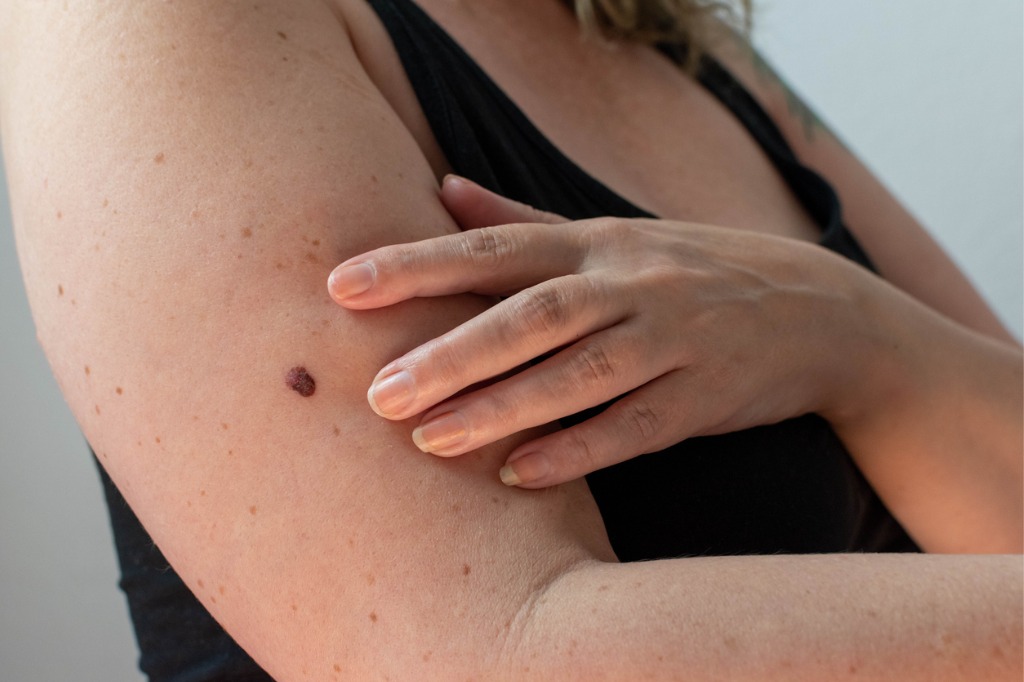
Knowledge about Melanoma Skin Cancer
Melanoma skin cancer is the worst type of skin cancer. It starts in the cells that make your skin’s color. Melanoma makes up just 1% of all skin cancers. But it causes most of the skin cancer deaths. The deep growth of the cancer sets how well we can treat it. So, we must find it fast.
Melanoma Skin Cancer Symptoms and Indications
Catching melanoma soon may save your life. It could be pink, red, purple, or even the same shade as your skin. Yet, it most oft shows as a black mole or spot. To spot the signs, keep the “ABCDE” way in mind:
- Asymmetry is when one half is not equal to the other.
- Border: There are uneven or crooked margins.
- Color: Inconsistent coloring or a variety of colors.
- Diameter: Greater than 6 mm, or around the size of an eraser for a pencil.
- Evolving: Any alteration in size, shape, or color is considered evolving.
This rule may not fit all bad skin spots. See a skin doc fast if you see any weird bumps, sores, or new marks on your skin.
Reasons and Dangers
The majority of melanoma skin cancer cases are brought on by excessive exposure to ultraviolet (UV) radiation from tanning beds or the sun. Skin cell DNA may be damaged by UV radiation, which might lead to uncontrolled development. Important risk factors consist of:
- Light-colored eyes, light hair, and fair complexion
- Past history of severe sunburn or prolonged exposure to the sun
- Many or unusual moles
- History of melanoma in families
- Immune system weakness
All skin types may be affected by melanoma. It often shows up on the palms, soles, or beneath the nails of those with darker complexion.
Melanoma Skin Cancer Diagnosis and Testing
Your dermatologist will take a small bit to check if a spot may be melanoma. Once sure, more checks set the stage & size of the cancer:
- Sentinel Lymph Node Biopsy: Verifies the presence of cancer cells in neighboring lymph nodes.
- Use CT, MRI, or PET scans to find internal organ melanoma.
- Blood tests: Evaluate general health and find melanoma-related indicators.
Treatment for later-stage melanoma skin cancer is guided by staging and may include more sophisticated medicines or surgical excision.
Options for Treatment
The stage of the melanoma and your health will determine how it is treated. The initial course of action is often surgery, which removes the cancer along with a margin of good skin. For advanced melanoma, you could need:
- Drugs that selectively target cancer cells are known as targeted therapies.
- Immunotherapy: Strengthens your defenses against cancer.
- High-energy rays are used in radiation therapy to destroy any cancer cells that remain.
The best approach is still early detection. Melanoma skin cancer has a nearly 99% cure rate when detected early.
Skin Health and Prevention
By protecting your skin, you can lower your chance of developing melanoma skin cancer:
- Steer clear of the sun from 10 a.m. to 4 p.m.
- Use a broad-spectrum sunscreen with an SPF of 30+ and reapply often.
- Wear protective clothes, caps, and sunglasses.
- Steer clear of tanning beds.
It is key to see a skin doc often. Ask your doc for a full skin check. Look out for new or odd skin spots.
Speak with Wall Dermatology Right Now!
Fast spot & right fix of skin cancer are key at Wall Dermatology. To keep your skin & health safe, our team gives full skin checks & made-for-you care.
If you spot odd moles, spots, or changes on your skin, get in touch with us right now! Our skin docs are set to help you at each stage & give you a plan made just for you. To best treat skin cancer quickly, it’s key to step in early.
Effective Treatment for Cancer Skin Peeling at Wall Dermatology
Protect your skin today with Wall Dermatology’s expert care. If you’re dealing with cancer skin peeling, our specialists provide personalized treatments for healing and prevention. Contact us now!
